Environmental Processing 101: what we can learn from soil samples on the A428
When you think about archaeology, you might think about brushing sand away from a perfectly intact artefact delicately poking out from the ground. However, as any archaeologist in the UK will tell you, our archaeology is much muddier! So, how do we extract knowledge from all that mud?
That's where environmental processing comes into play. It takes buckets of soil and transforms them into the stories of the past A428 landscape.
During our A428 excavations, we are taking lots of environmental samples. We chose to take them for many different reasons
- a pit is filled with very dark soil and pieces of charcoal – we can find out what trees were growing nearby and used for fires.
- a ditch where archaeologists have recovered lots of pottery sherds – we can estimate when the ditch was in use, based on the type of pottery. This means we have an approximate date for processed grains or other environmental remains we find in the samples
- to gain a greater understanding of the purpose of the area – we could find pollen, seeds, and even insects in the samples. These all help us understand what the environment looked like thousands of years ago.
Recently we were lucky enough to find the burnt remains of an apple in one of our samples! A closer look by one of our specialists revealed this was a crab apple. These small, tart apples were tastier when cooked, although maybe not as well done as this one... They were the only type of apple available in Iron Age Bedfordshire and Cambridgeshire before the Romans introduced the larger, sweeter, apples we enjoy today!
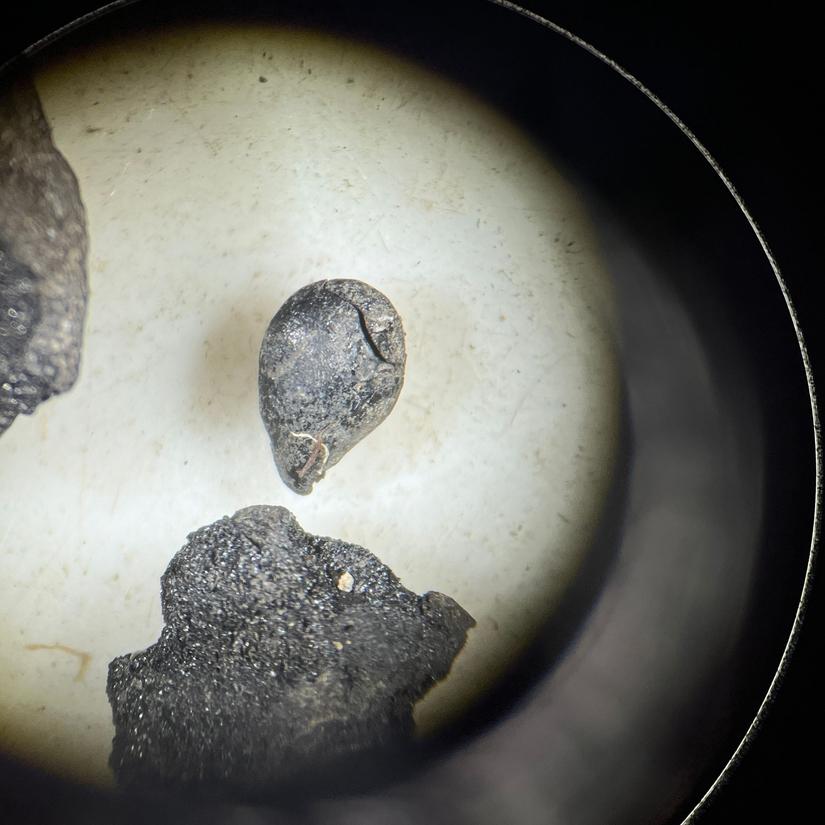
Wet Sieving - Every Environmental Processors’ Favourite Day….
The aim of wet sieving is to extract the heavy residues and ‘flots’ from the environmental sample. Heavy residues, often referred to as ‘res’, are any materials that sink, and the flots (you guessed it) are the materials that float.
Wet sieving involves adding the samples to a large tank full of water. As the sample passes through the tank, the mud and silt break up and are washed away, leaving the res at the bottom of the tank, and using a mesh sieve to catch the flots.
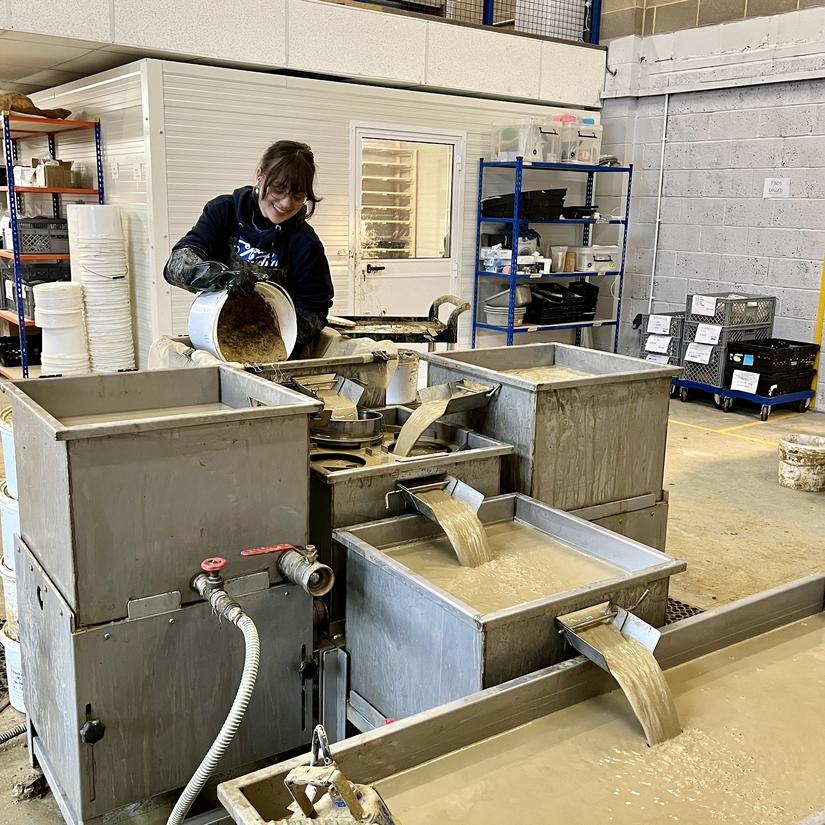
Wet sieving really is the lucky dip of archaeological processing. Once the dust (or silt in this case) has settled, the artefacts which remain can reveal so much more about our sites. While wet sieving samples for the A428, we have so far recovered small pieces of bone, pottery and fired clay, as well as archaeobotanical finds such as seeds, charcoal, and even insects!
Once all the mud has been removed from the sample, we allow the res and flots to become completely dry in our drying room before we begin the next stage.

Dry Sieving - Stone or Bone?
Once our A428 environmental samples are dry, we begin to ‘sort’ through the res using 4 different sieves with descending sizes of mesh.
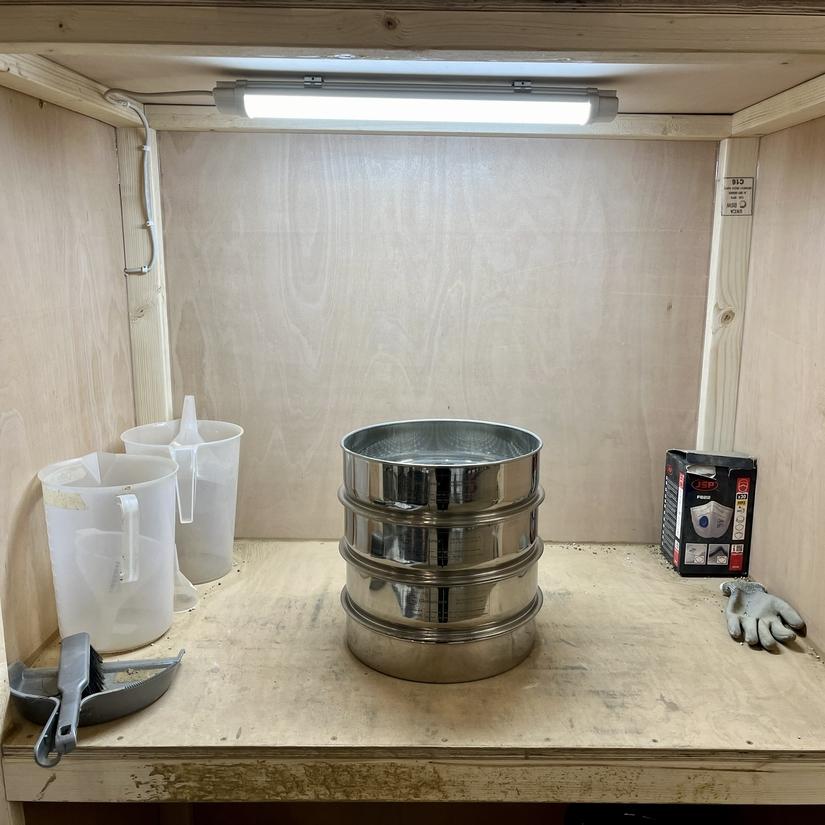
During this process, we are looking out for any artefacts which were not spotted during excavation. This form of analysis is referred to as a micro-excavation and can be a lengthy and painstaking procedure.
Recently we found this small wire loop fastener. This may have been used to fasten clothing during the late medieval or post medieval period.
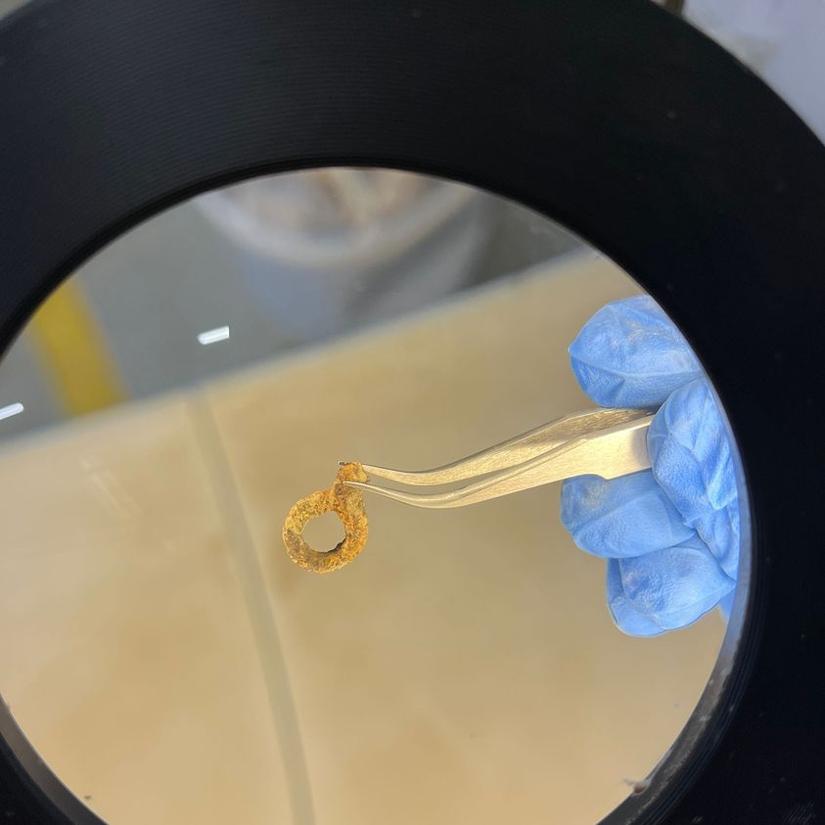
As the mesh becomes smaller, the types of artefacts tend to change. The wider meshes are more likely to hold pieces of large mammal bone, such as sheep, horse, and cow, and identifiable pieces of pottery, which can be valuable to estimating the age of the feature. As we go down in size, we discover the remains of small mammals including mice and voles, and charred plant materials, such as grains, chaff, and seeds.
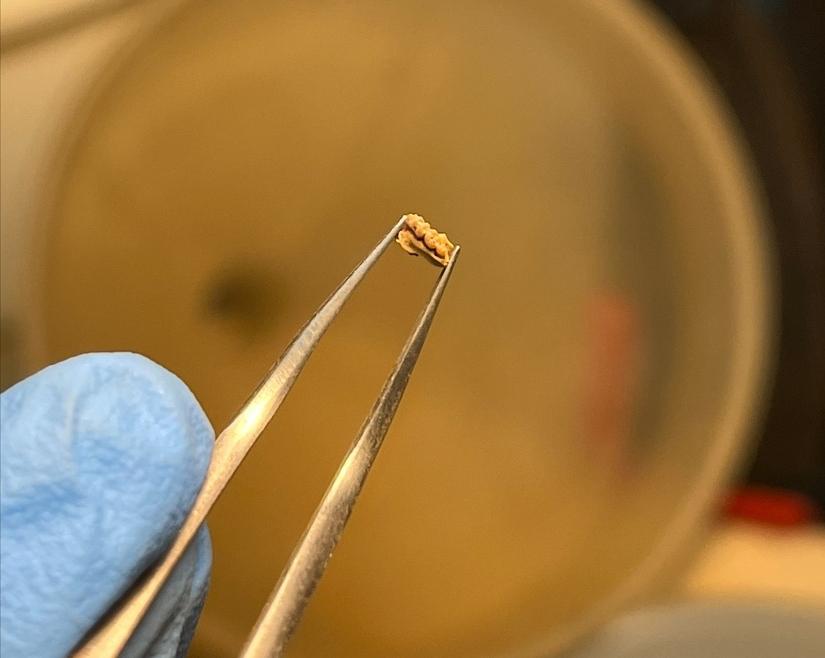
We’ve even picked out the fossilised stems of a marine animal from 300 million years ago!

We use petri dishes to separate all our finds and record the amount of each material in the sample. This separation is important to make sure all the artefacts are sent to the right specialist for further analysis.
In this sample we found:
- molluscs (animals with shells, like snails)
- pottery
- charcoal
- fired clay
- burnt flint
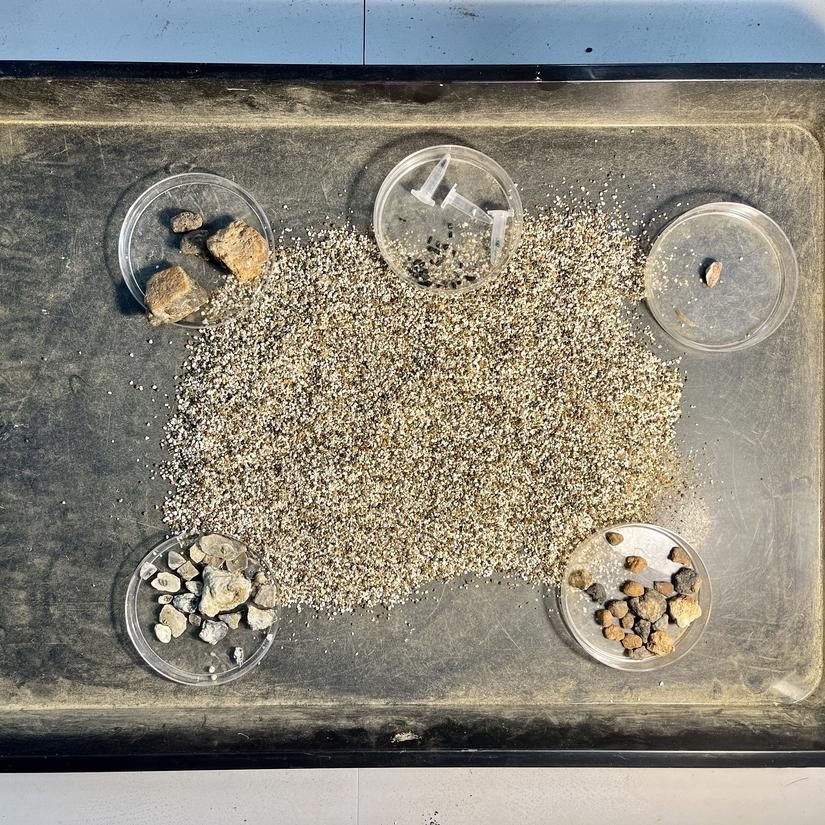
Ready to be an Environmental Processor?
Although environmental processing is often a bit messy, and time-consuming, it is a crucial aspect of archaeological analysis. It is truly quite amazing how much information can be uncovered from a bucket of soil!
By Grace Smithers, post-excavation Digital Engagement Assistant on the A428.
Follow along with our journey!
@A428Cat
Facebook.com/A428BlackCat
#A428BlackCat
Find out more about the A428 National Highways scheme.
Excavations are being undertaken by archaeologists from MOLA, as part of the National Highways A428 Black Cat to Caxton Gibbet Improvement Scheme.